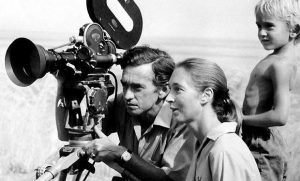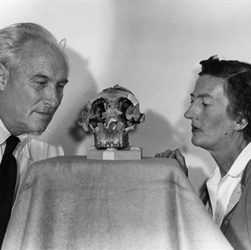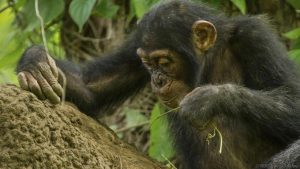It was only a little more than fifty years ago that the world was astounded by the discoveries of Jane Goodall as she described the normal, day-to-day behavior of Chimpanzees. By simply monitoring the same group of chimpanzees for such a long period of time that they ceased to pay any attention to her Goodall was able to observe behavior in them that previously was considered to be purely ‘human’. Tool use, hunting in groups for small animal prey and even murder were among the most notable of her discoveries.

Since that time other researchers have uncovered further aspects of chimpanzee behavior, even the astounding fact that large populations of chimpanzees in different parts of Africa display different behaviors, the rudimentary beginnings of culture, even ethnicity. All of these studies have one thing in common, the more we learn about our closest relatives the more human they seem.
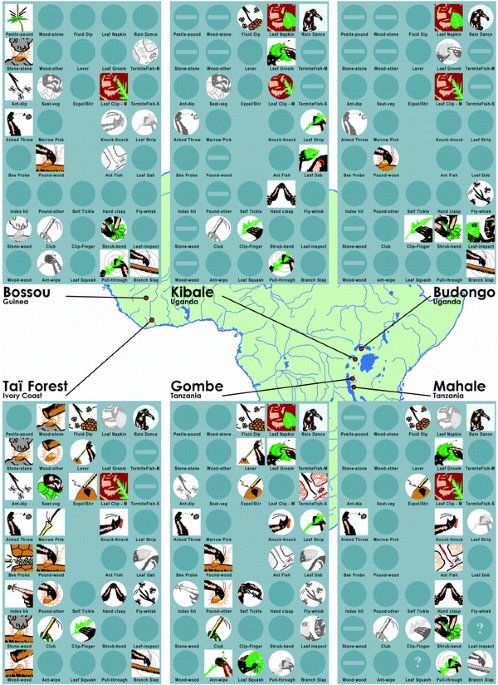
Now two new studies have added further evidence in support of that thesis. The first concerns social interactions between two chimpanzees or two bonobos, a closely related species often mistaken for chimps.

Whenever two humans meet it is customary for them to exchange greetings, “Hi, how are you doing.” being typical. The strange thing is that the better two individuals know each the shorter the time required for the greeting. Think about it, if you run into a business acquaintance that you haven’t seen in over a year you spend a few minutes getting re-acquainted before getting down to business. On the other hand when you get together for dinner with your best friend who you just saw last week it’s “Hey man, good to see you…where should we eat?” The two of you know each other so well that you don’t have to get re-acquainted, you can get right down to the purpose of the meeting.

The same happens at the end of the get together. When the meeting is over with that business associate you see once or twice a year you make plans to keep in touch, maybe even arrange the next meeting. When you and your best friend say goodbye it can be a short as ‘See ya around.” Anthropologists refer to these greetings and goodbyes as Entry and Exit phases of a social interaction and together represent a Joint Commitment to the social interaction.

Now a group of researchers at the Institute of Work and Organizational Psychology at the University of Neuchâtel in Switzerland and eight other institutes has published a paper in the journal iScience where they present evidence of very similar conduct in both chimps and bonobos. The observed behaviors include such actions as eye contact and non-verbal signals both prior to and at the end of some joint activity such as mutual grooming or play.
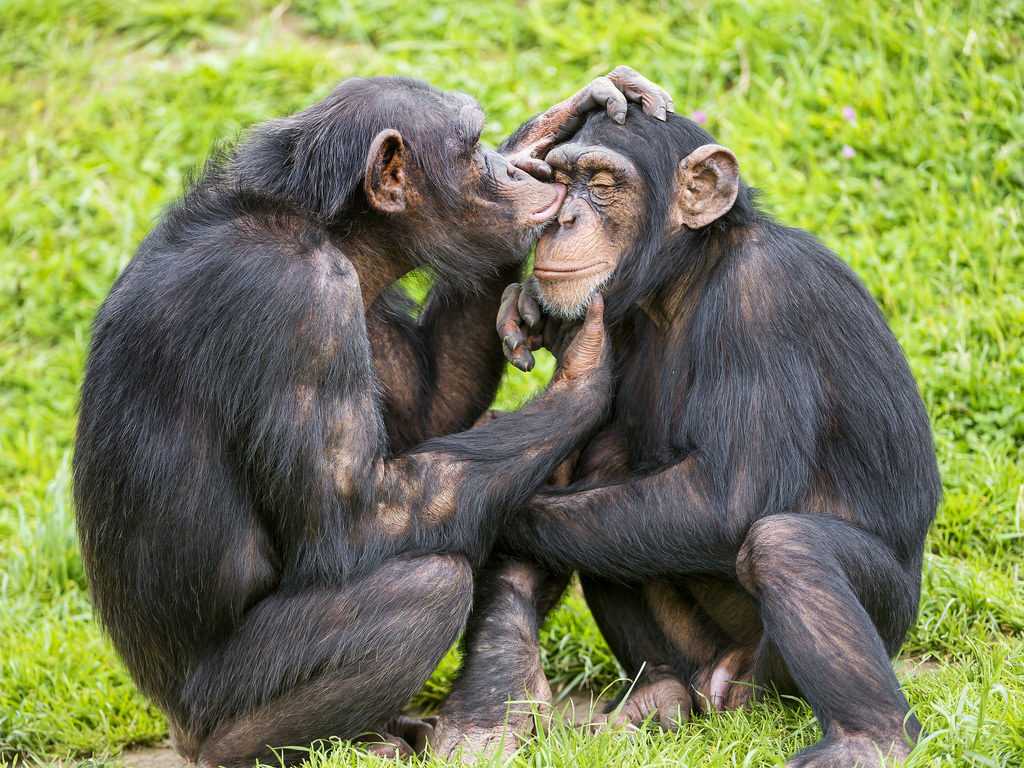
Bonobos in particular exhibited the human like behavior; even to the extent that the observed greetings and farewells are shorter for very well acquainted individuals, again just as in humans. One interesting observation made in both species is that the social rank of the individuals involved, such as the alpha male, appeared to play no role in the coordinated joint action phases.
So it seems as if our relatives share much of our behavior when interacting on a one on one basis. A second recent study gives evidence that they also act in very human like ways when in larger groups.
Once again it was Jane Goodall who first observed the chimpanzees of the group she was studying carry out what could only be described as an act of war against a neighboring group. What she described was that the alpha male of her group first gathered together all of the other males. The males then quietly and stealthily entered the territory of a neighboring group where, after a period of time in hiding they ambushed a juvenal male of the neighboring group, killing him without mercy.
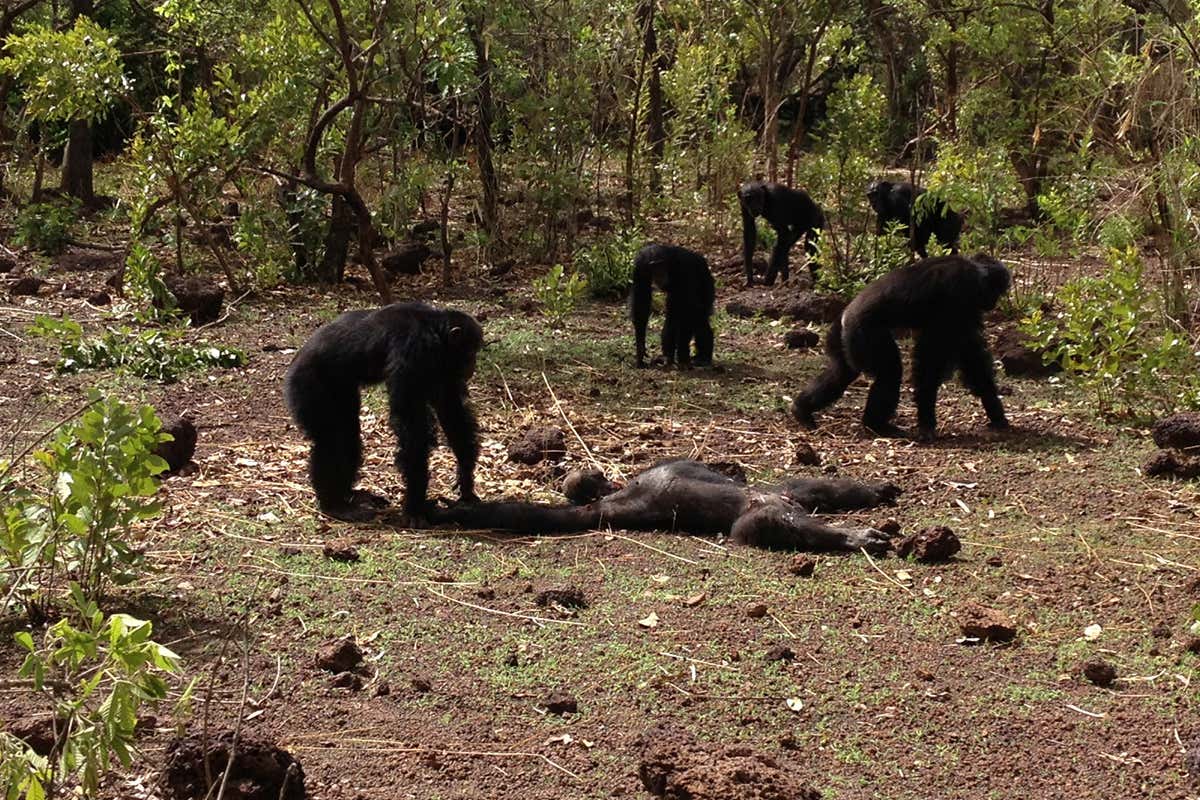
Now biologists at the Loango National Park in Gabon have witnessed two inter-species battles between groups of chimpanzees and gorillas. In each incident the chimpanzees both outnumbered the gorillas and seemed to have instigated the conflict. Also, in both incidents a young gorilla was killed.

The first incident occurred in February of 2019 and took place when a group of 18 chimpanzees were returning to their territory from a foraging excursion. The chimps came upon five gorillas, only one of which was a male and immediately became aggressive. In a battle that lasted nearly an hour an infant gorilla was separated from its mother and killed.
The second battle happened in December and was even larger with 27 chimpanzees attacking seven gorillas for well over an hour. Again a baby gorilla was stolen from its mother and killed and this time the murdered infant was actually eaten by the triumphant chimps.

It is not known how often such conflicts take place between chimps and gorillas, or what the reasons for the battles were. Both chimpanzees and gorillas are very difficult to keep under observation. The naturalists at Loango Park have noted however that both incidents occurred during the season when supplies of fruit are low so the fights may have been over resources.

Nevertheless the episodes do illustrate just how remarkable the resemblance is between the behaviors of ourselves and our closest relatives. Whether that be for good or ill.

